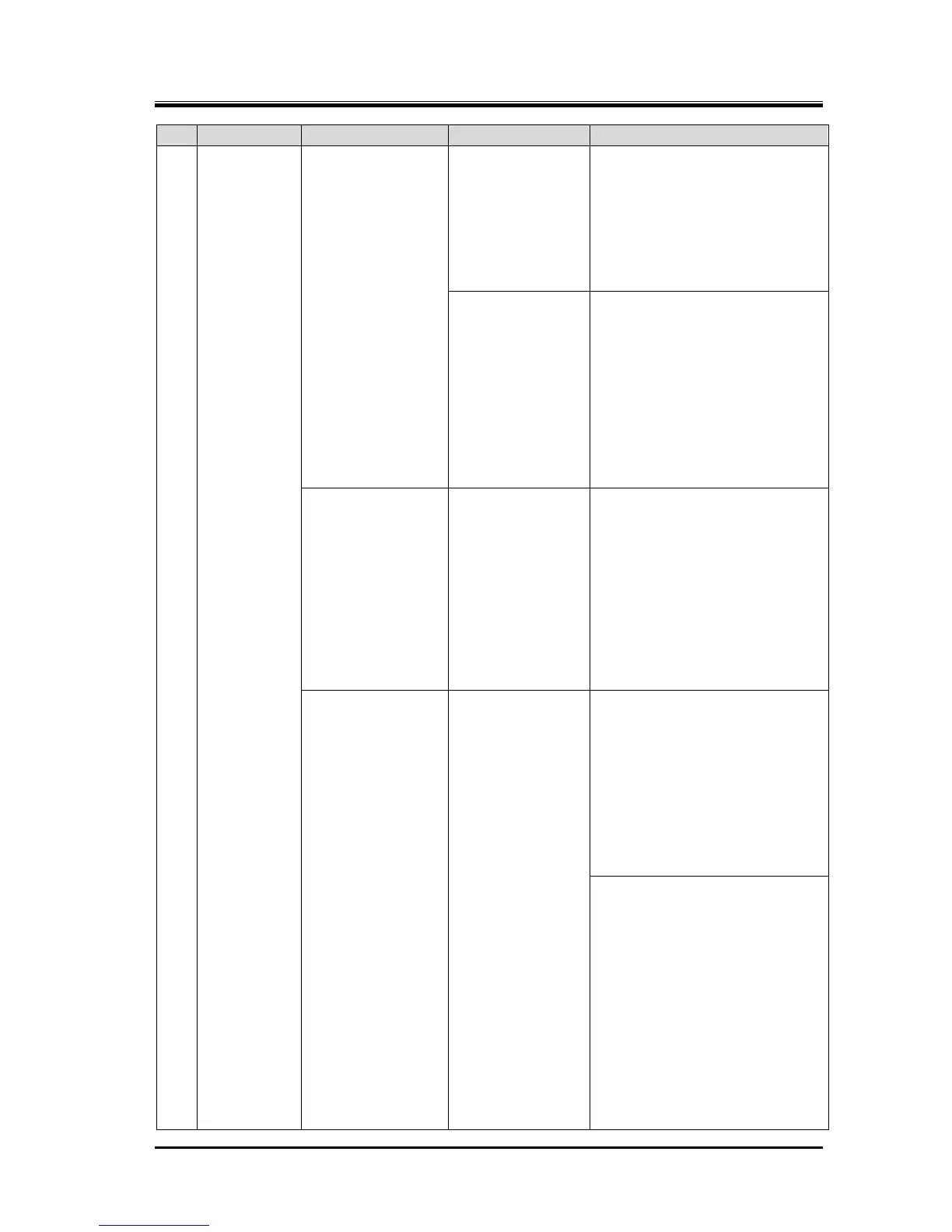2203M4JE-MY-iS2-N_2017.04.
Chapter 6 Troubleshooting
Screw Compressor i-series
6-7
generates
abnormal
vibration
and/or
sound.
Lock washer tooth not bended, or
thrust bearing rolling elements
(balls) are worn.
→ Check the thrust bearing. If
any defect is found, replace it,
and then reassemble it after
adjusting end clearance and
checking shaft runout.
If no other causes are found for
abnormal vibration, or if on-site
overhaul only has been repeatedly
performed for a long time, this
may be the cause.
→ Overhaul the compressor at a
place where a dynamic
balance
measurement/adjustment
system is available, such as
the MAYEKAWA Moriya Plant.
during startup
* Loud abnormal
noise at startup.
* If this is heard,
the compressor
may get damaged
instantaneously.
liquefies and stays
inside upstream
piping when
package unit is
stopped.
There are many probable causes,
such as a leak inside liquid supply
solenoid valve on the load side,
insufficient heat exchange
(refrigerant evaporation) in heat
exchanger, or trapping due to
miss-piping in the piping line.
→ Identify the cause(s) and take
necessary measures. Then
overhaul and inspect the
compressor.
during operation
* Notable frosting
on the suction
side.
* In many cases,
flow-back of mist
(steam) rather
than liquid occurs.
* Sometimes,
gas-liquid
separator
(accumulator) is
attached to
prevent this
symptom.
* See also the
causes in item 02,
"Insufficient
refrigerant flow".
supply expansion
valve is large.
In case of temperature-type
expansion valve, check the
condition of temperature sensitive
cylinder and capillary tube. If any
defect is found, take necessary
actions.
If orifice gets unsuitable due to the
change in operating conditions,
replace the orifice with proper size
one(s).
In case of electronic expansion
valve, check devices attached on
the expansion valve aperture
control mechanism (circuit) such
as temperature sensor, converter,
controller (overheating regulator).
If any of them is found defective,
replace it.
In the same way as with
temperature-type expansion
valve, if orifice gets unsuitable due
to the change in operating
conditions, replace the orifice with
proper size one(s).
